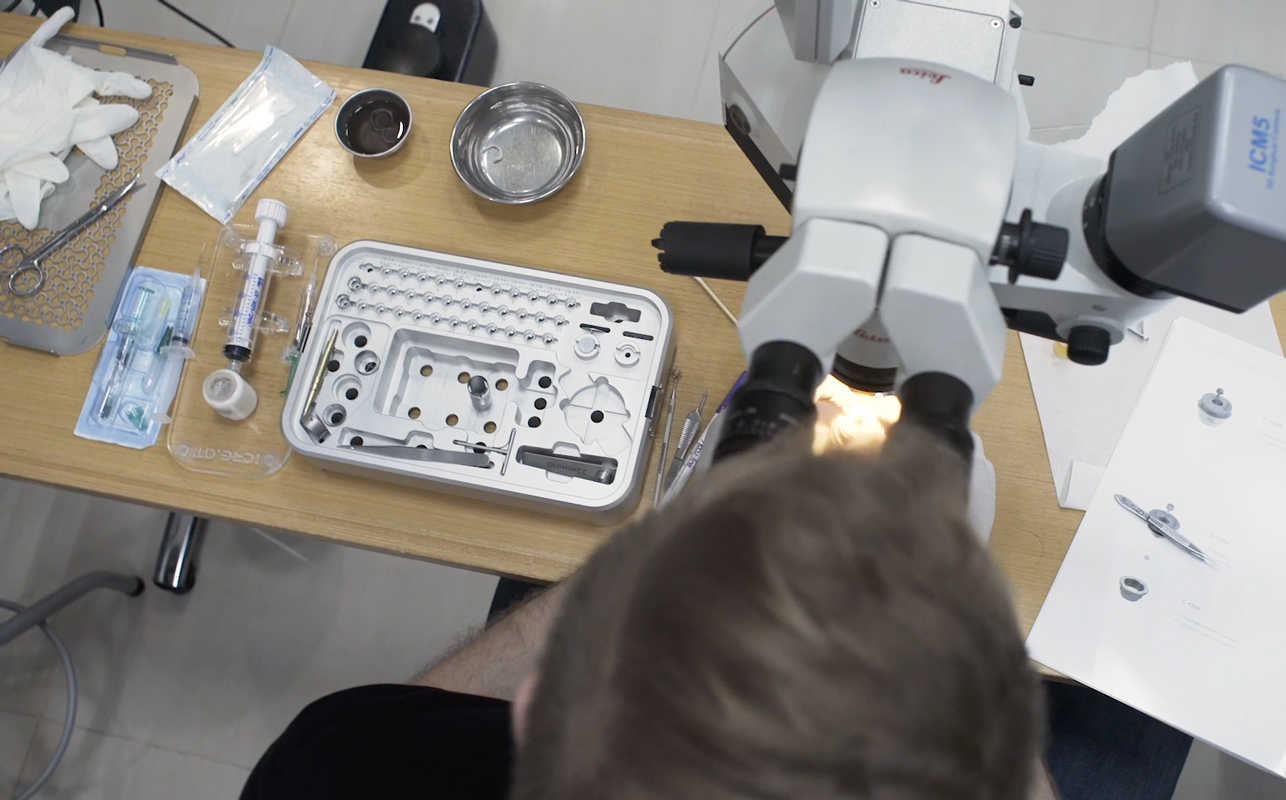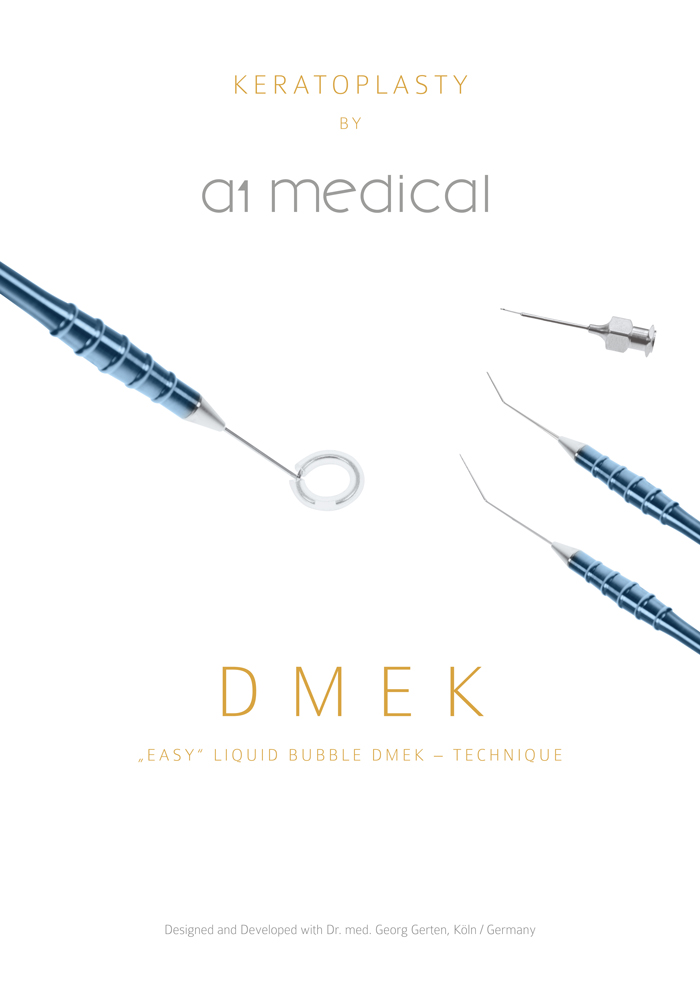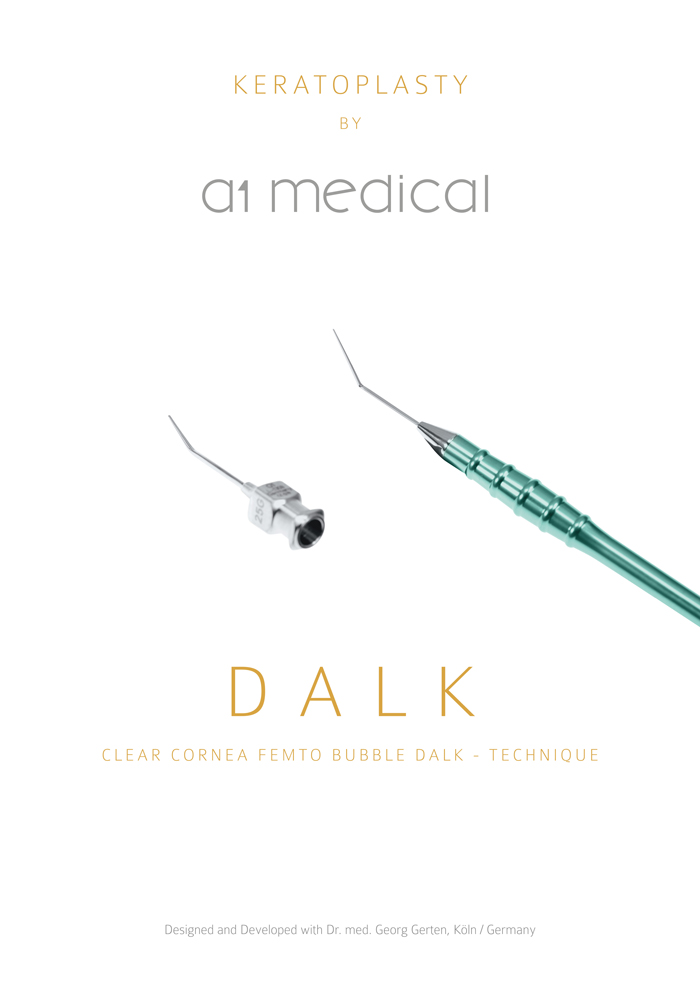Keratoplasty by a1 medical

CTS

DMEK

DALK
Developed with two renowned corneal surgeons
Corneal transplantation is the most frequently performed transplantaion on human. For this reason, a1 medical has worked with two renowned corneal surgeons to develop instruments for two surgical techniques of lamellar keratoplasty, as well as a trephine system for penetrating keratoplasty.
Dr. med. Jörg H. Krumeich
Bochum, Germany
Dr. Georg Gerten
Köln, Germany
CTS
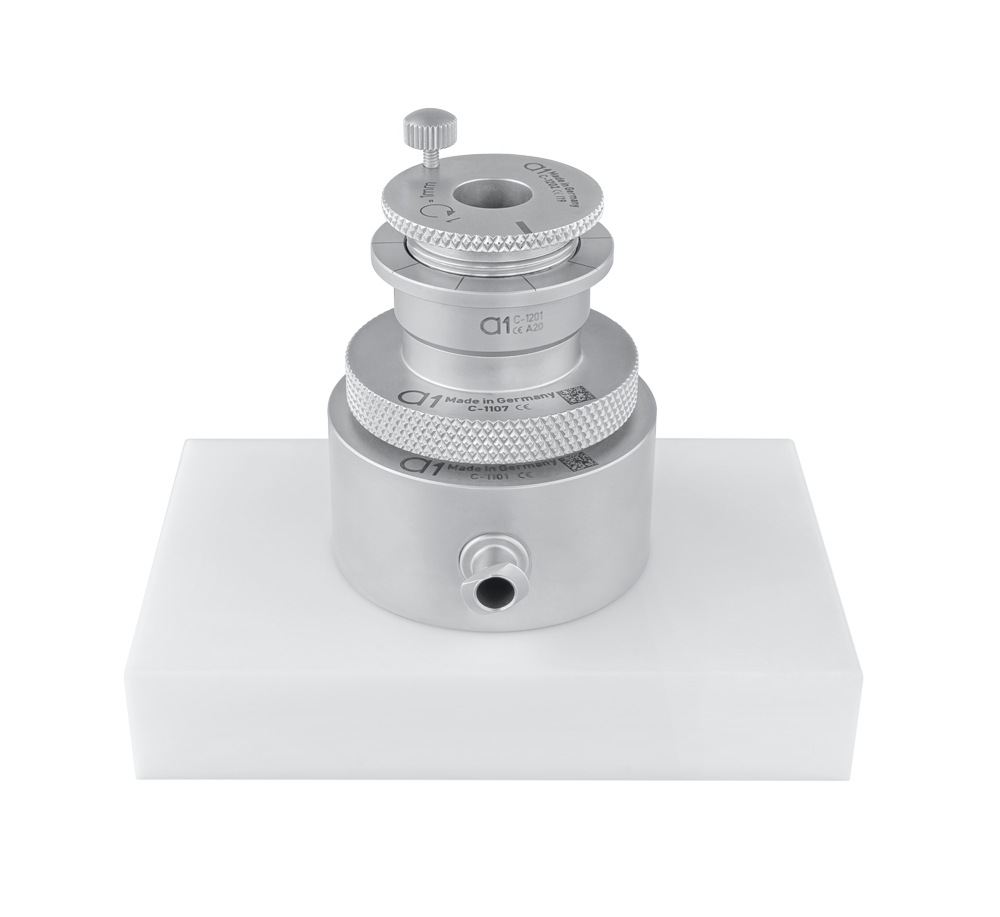
Cornea Transplant System
The CTS is at the center of our developments and our “Keratoplasty by a1 medical” product line.
CTS stands for Cornea Transplant System. The name was deliberately chosen because the CTS not only can be used for penetrating keratoplasties, but also for lamellar keratoplasties DMEK and DALK. The CTS is therefore the only system available on the market that can be used with its individual components in these three areas.
The CTS – Cornea Transplant System, which is only available in diameters 7.0, 7.5 and 8.0mm, achieves a high level of precision through …
- No tilting of the trephine, no uneven diameters, no upsizing
- No suction of the cornea, no increase of the intraocular pressure
- No elevation of the cornea, no oval incision
- No punching from the endothelium, no distorted wound edges, thereby minimizing the risk of cell loss

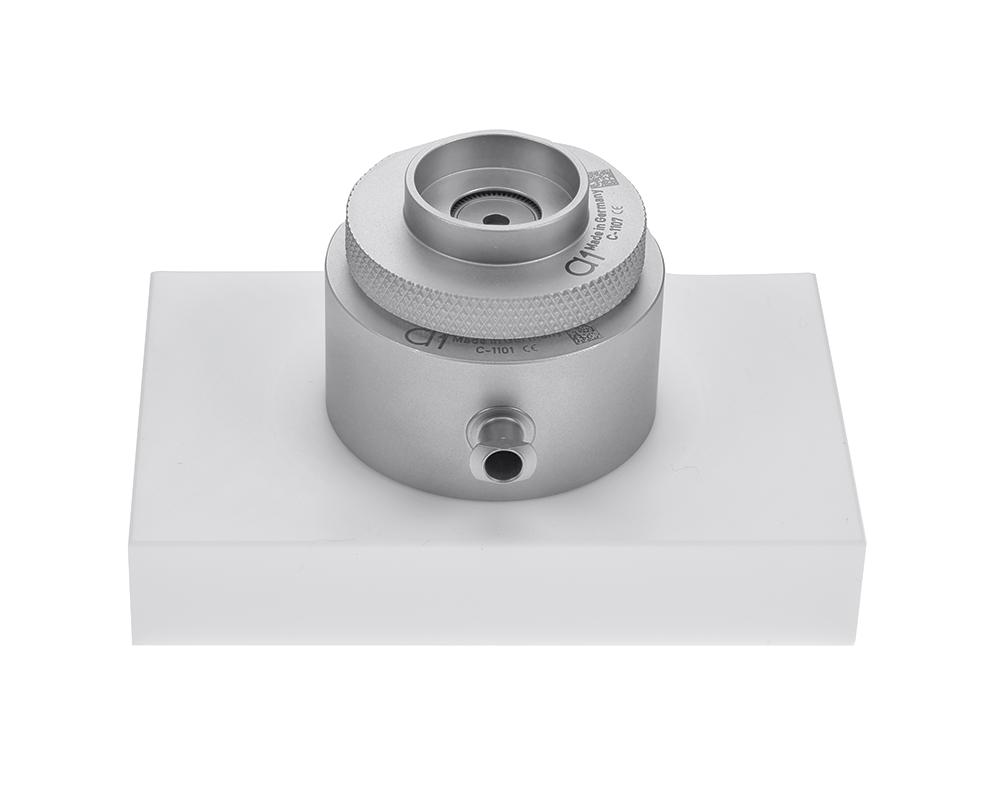
Anterior Chamber Bench
- optimal placement and fixation of the donor cornea by Fixation Rings
- 11.0 mm Fixation Ring for fixation of small pre-cut corneal buttons
- no pressure loss. Pressure remains constant at 22 mmHg
- it is trephined from the epithelium with a 360 ° cutting process and not punched by the endothelium. no distorted wound edges. Minimized risk of cell loss of the endothelium
- through a small modification of the Anterior Chamber System, by replacing the Metal-Central Plug by the Teflon-Central Plug, the Anterior Chamber System can be used for the preparation of the Descemet for the DMEK
Trepanation-System
- offers the unique flexibility of using three different trephine diameters,
in combination with the corresponding Glass Obturator - is used, by coupling, on the donor (Anterior Chamber Bench) and the recipient (Vacuum Suction Ring)
- precise depth position and 360 ° trepanation in visible situs
- allows a straight 90 ° cut. The result is an equal diameter for the donor and recipient. upsizing or downsizing to avoid tissue squeezing or tissue gaps is not necessary
- optimal wound healing. Reduced risk of tissue rejection


Glas-Obturators
- available with radii from 7.0 to 8.0 mm and accordingly from 41.61 to 47.56 diopters
- donor and recipient corneas are fixed in their shape during trepanation. thus, an oval cut, which could be caused by the upwards movement of the cornea into the cavity of the trephine, is prevented
- the radii of the recipient as well as of the donor are taken into account. This makes the CTS – Corneal Transplant System particularly unique
- by choosing the obturator, its corresponding radius is transferred from the donner to the recipient. High ametropia can be avoided by choosing the correcting obturator
The glass obturators are now also available for keratoconus corneas with diopter 50-70.
Vacuum-Suction-Ring
- low risk of astigmatism caused by trepanation
- the vacuum is formed on the sclera, not on the cornea
-> no suction to the cornea at all - the vacuum suction ring is firmly fixed
-> Tilting the system is impossible - Tilting the system by only 10° would result in an astigmatism of 5.9 D
- the special chamber design and triangular profile of the Vacuum-Ring-Insert prevents the sclera from being drawn in
-> no increase of the intra-ocular-pressure
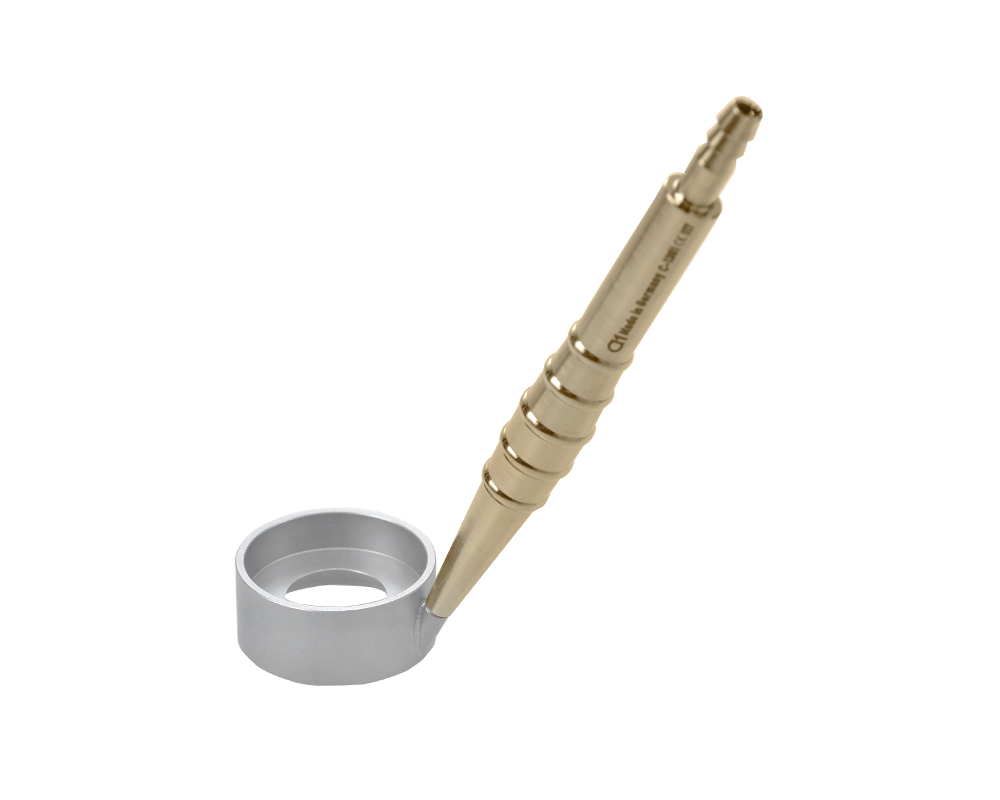
DMEK
Easy Liquid Bubble DMEK
Dr. Gerten has taken, as the basis for his DMEK-technique, the liquid bubble DMEK-Technique, for gaining the graft by himself.
The goal was to create a safe technique to get the graft, without touching the Descemet’s Membrane or Endothelium and damaging the Descemet’s Membrane while creating the bubble.
The result is the EASY LIQUID BUBBLE DMEK by Dr. Gerten.
All advantages at a glance
The advantage is that the surgeon knows the status of the graft. Using our instruments, designed and devloped together with Dr. Gerten, you can even avoid loosing the graft. Hospital is paying less for the donner tissue.
Special Instruments for the Recipient
Which components of the CTS can be used for DMEK?
Through a small modification of the Anterior Chamber System, by replacing the Metal-Central Plug by the Teflon-Central Plug, the Anterior Chamber System can be used for the preparation of the Descemet for the DMEK
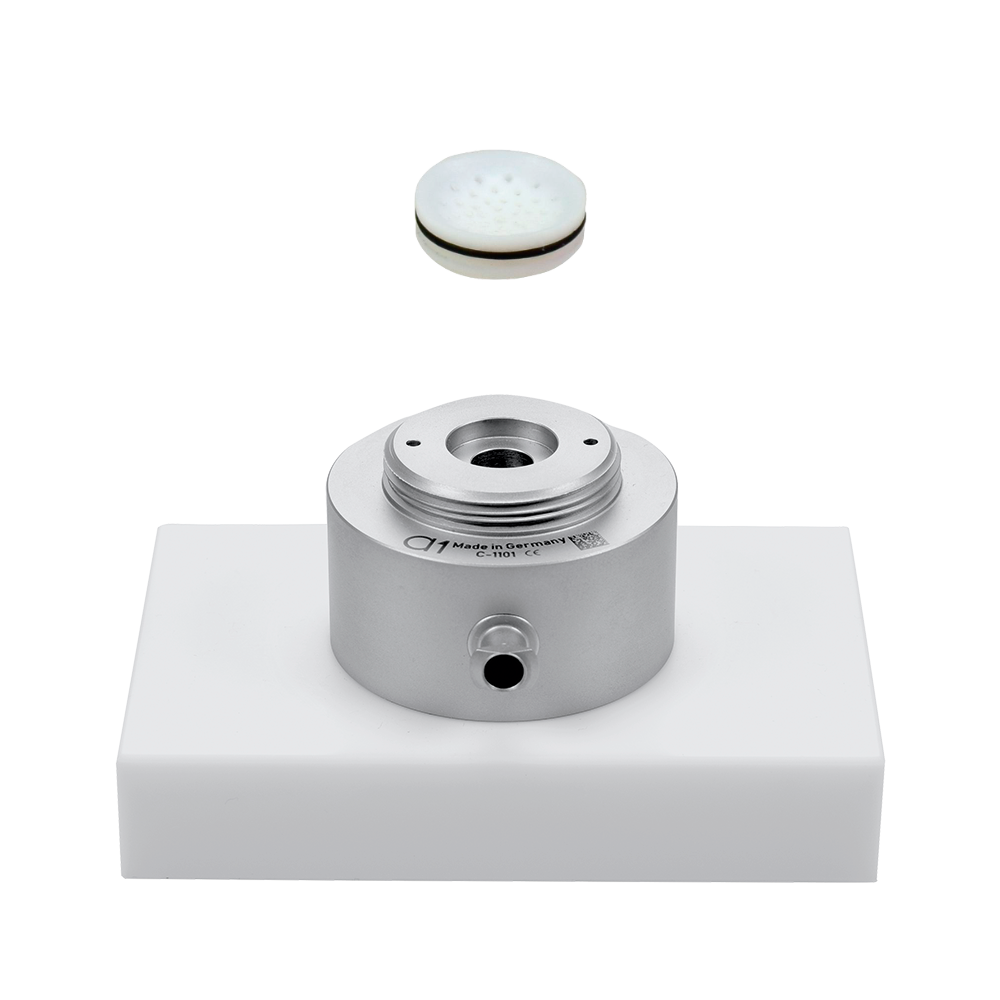
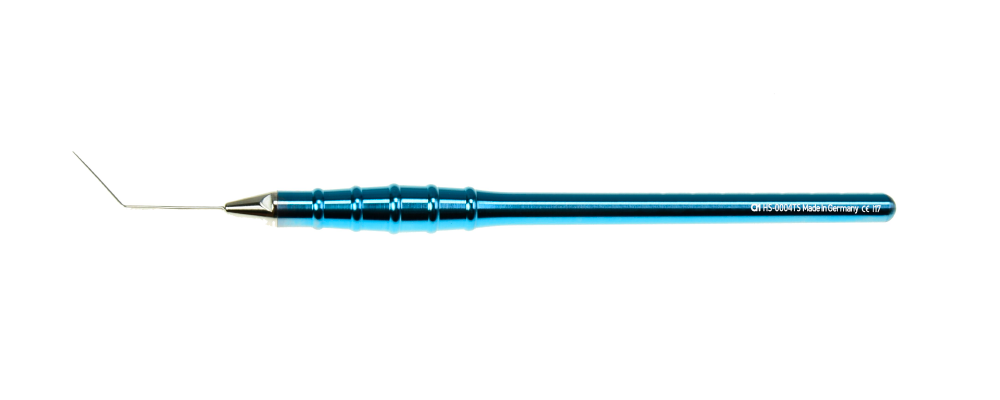
Gerten Dilatator 1
For the first opening phase of the bag
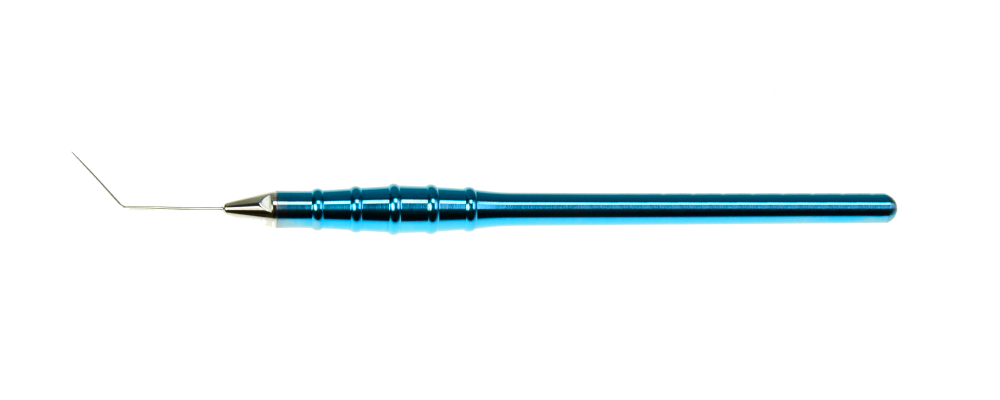
Gerten Dilatator 2
For the second opening phase of the bag
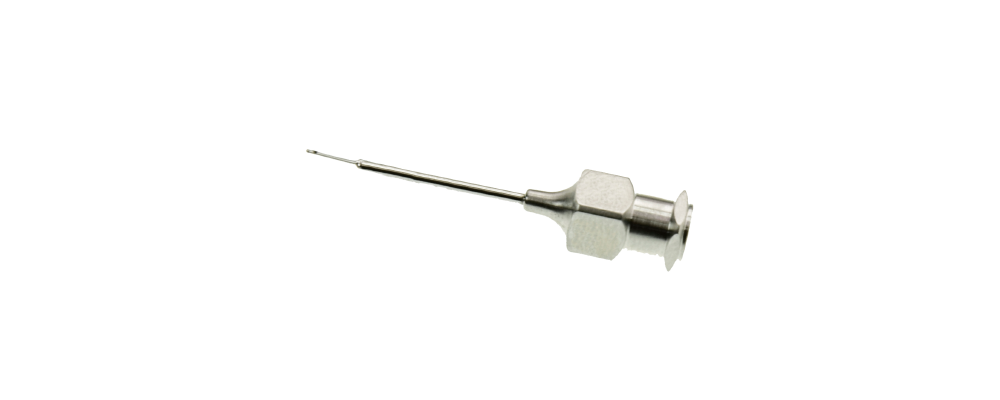
Gerten DMEK-Cannula
For the injection of the liquid, thereby dissolving the descemet from the stroma and creating the Liquid Bubble
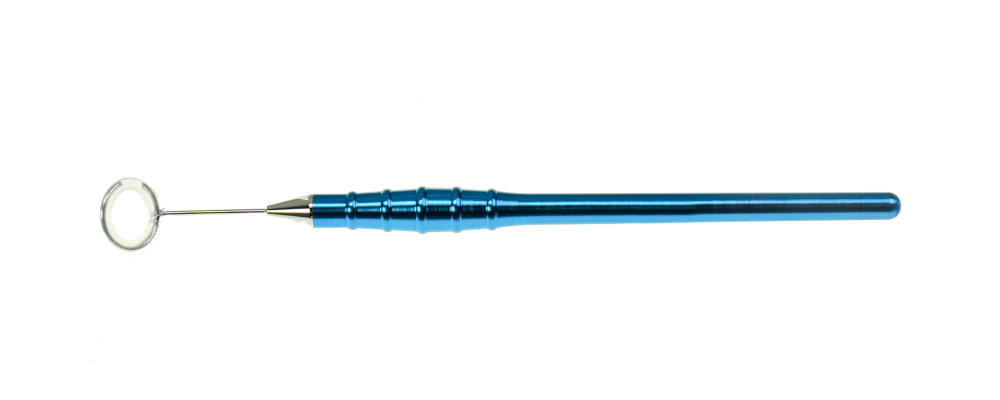
Gerten circular peripheral sealing-ring
The circular peripheral sealing-ring prevents the transplant to be ruptured at possible scars so you will not be loosing the graft

Gerten
DMEK-Forceps
For the reception of the transplant
Special Instruments for the Recipient

Gerten Descemetorhexis-Forceps
To remove the detached Descemet’s Membrane from the anterior chamber
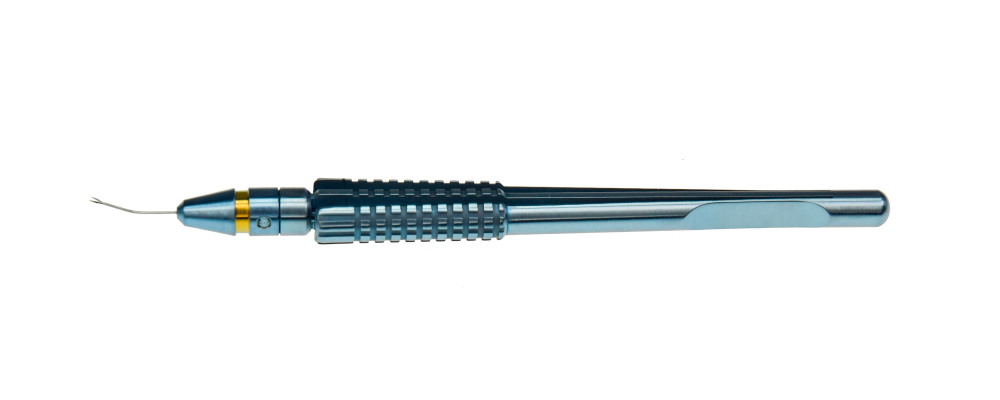
Gerten
Iridectomy
Forceps
For grasping the iris during an iridectomy
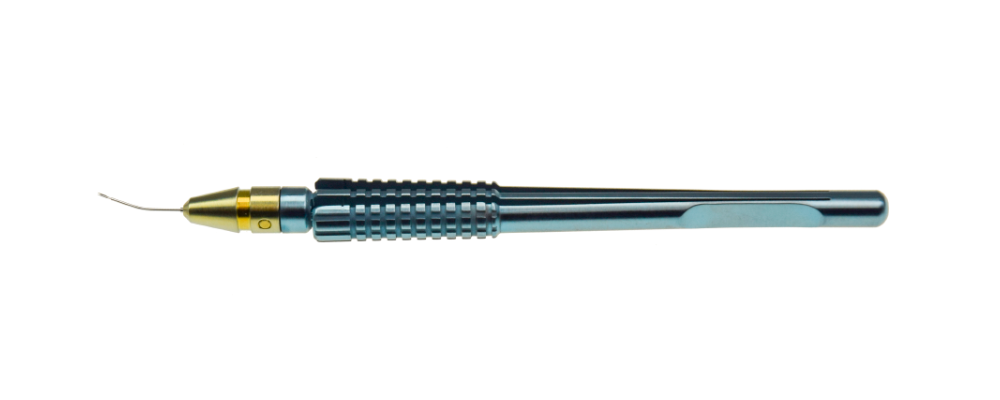
Gerten
Iridectomy
Scissor
For cutting the iris during an iridectomy
DALK
Clear Cornea Femto Bubble DALK
The currently most proceeded technique is the Big Bubble technique.
Challenging is … Descemet’s Membrane should not be ruptured when inserting the cannula.
-> Finding the right level
- Descemet’s Membrane should not be ruptured when removing anterior lamellar parts
- Descemet’s Membrane should not be ruptured when doing preparation on the edges
- Descemet’s Membrane should not be ruptured when doing preparation down to DM
- NO stromal parts should remain on the DM
So risk of perforation as well as stromal remnants with inferior optical results is high. In case of a perforation surgeons are converting to penetrating Keratoplasty.
All advantages at a glance
Dr. Gerten has taken, as the basis for his DALK technique also the Big Bubble but considering the following challenges:
How can the preparation on the patient be done, in a safe, precise and reproducable way?
Without perforating the Descemet’s Membrane
Without Stromal remnants
Having permanent perfect vision instead of a milky cornea
The goal was to create a safe technique to get the preparation on the patient done without perforations and to get a graft of the donner and the bed at the patient that are perfectly fitting together.
The result is the Clear Cornea Femto Bubble DALK by Dr. Gerten.
Special Instruments for the DALK
Which components of the CTS can be used for DALK?
The CTS can also be used for DALK with all components like a penetrating keratoplasty. The donor tissue is perforated throughout and Descemet’s membrane is then removed from the transplant obtained. On the receiver side, the trepanning unit of the CTS can be limited to a predetermined depth so that perforation of Descemet’s membrane can be avoided.

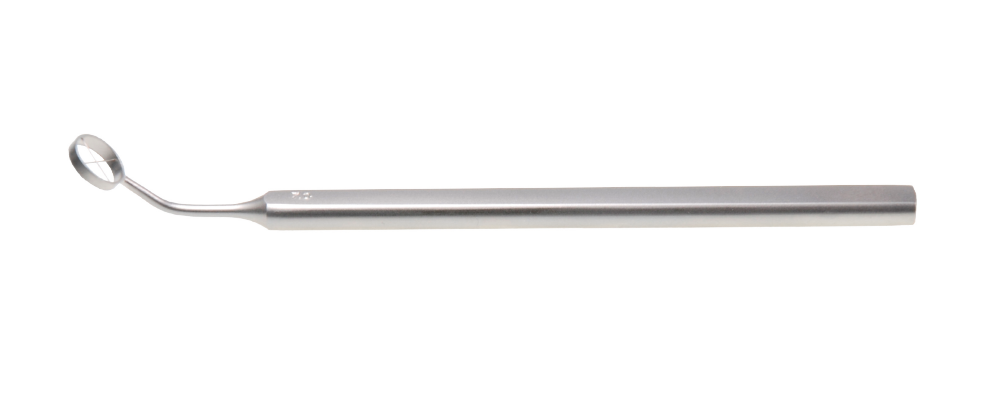
Gerten Cornea-Ring-Marker
including the marking of the Cornea-Center for marking the cornea and defining the center of the cornea
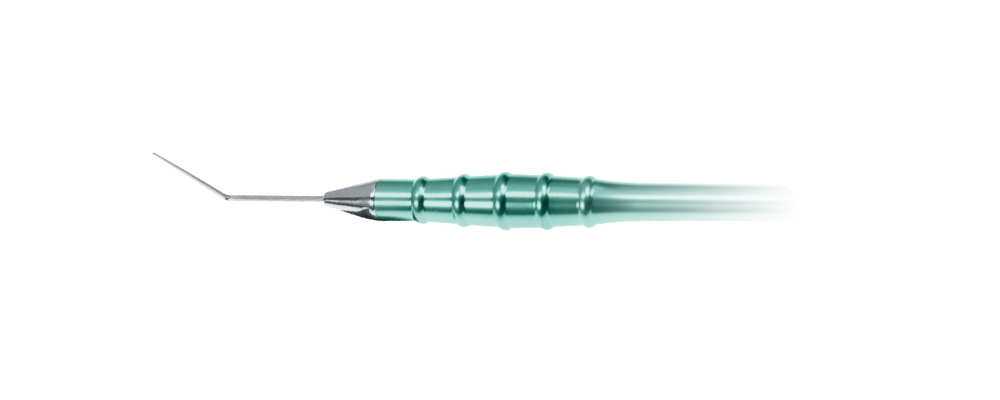
Gerten DALK-Spatula
triangular, blunt
For opening of the bag

Gerten DALK-Cannula
for the injection of the liquid, thereby dissolving the descemet from the stroma and creating the Bubble
Wetlabs
Invitation
You are welcome to contact us at any time regarding wetlabs for our Keratoplasty by a1 medical product line.
We regularly organize wetlabs in which you can take part.
